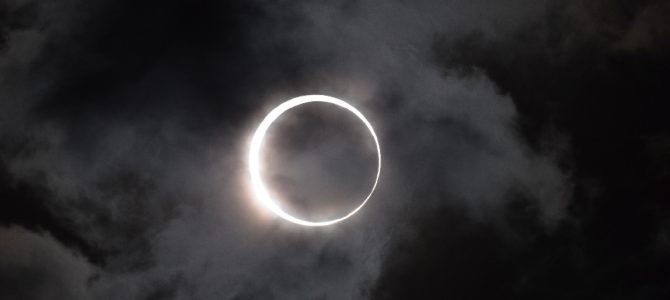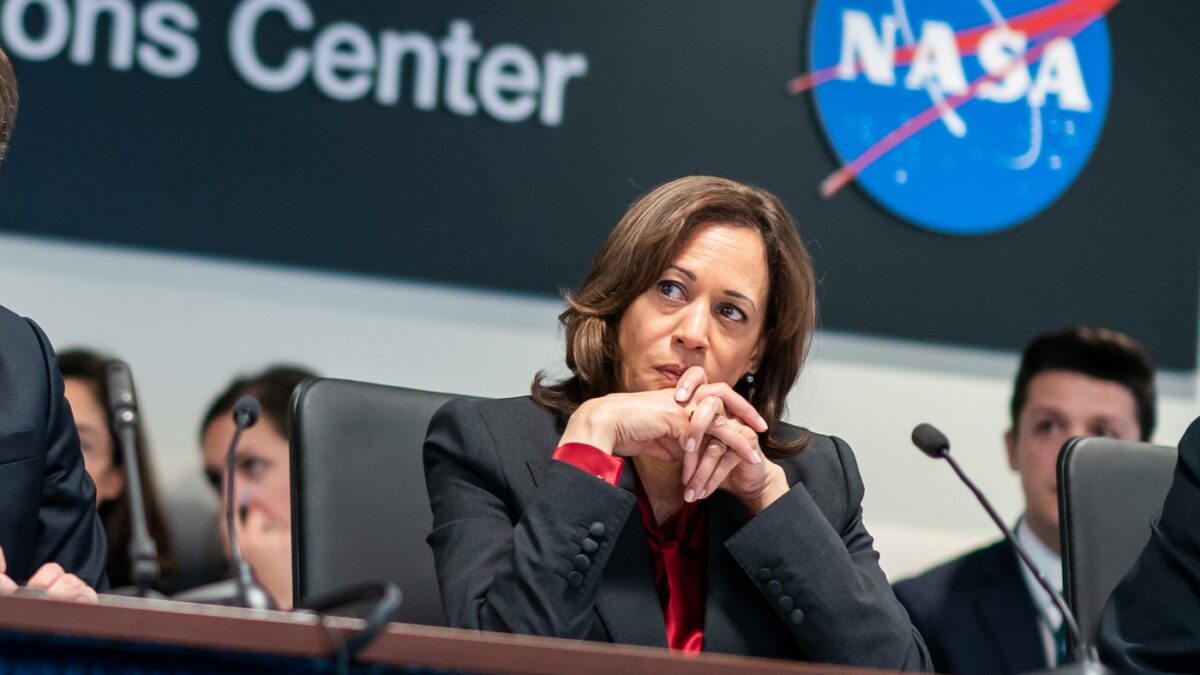
Seven months after Donald Trump’s inauguration, the nation will be plunged in darkness that sweeps across the continent. And it won’t even be his fault. Or Obama’s. Or the fault of the Russians, Chinese, Iranians, flyover deplorables, urban bubbleheads, college snowflakes, jihadist immigrants, or anyone else.
Instead, we’ll get to witness a total solar eclipse on Monday, 21 August as illustrated by this global map provided by Xavier Jubier.

The U.S. Naval Observatory has a more easily printable map, as shown below.

The moon’s penumbra will be cast over all of North America, with the sun completely blocked across a path roughly 70 miles wide. Beginning over the Pacific, totality occurs at 10:18 a.m. (PDT) over Salem, Oregon, at 11:43 a.m. (MDT) in Casper, Wyoming, at 1:28 p.m. (CDT) over Nashville, Tennessee, and will be last visible in North America at 2:47 p.m. (EDT) in Charleston, South Carolina, crossing the country in 92 minutes.
The lunar shadow travels eastward because the moon’s tangential speed is almost three times faster than our surface rotation at that latitude. NASA provides animations from its website and on the YouTube link below.
Links to regional maps are available for more details. If you miss this year’s eclipse, you’ll have to wait until Saturday, 12 August 2045 for the next such sweeping affair, although another total eclipse will be visible from Texas through Maine on Monday, 8 April 2024.
In a solar eclipse, the moon passes in front of the sun, casting a shadow over part of the earth’s surface. This shadow was photographed from the International Space Station during the total eclipse of 29 March 2006 over Africa and Asia.

When the moon’s orbital distance approaches the minimum (perigee), its disc obscures the sun completely while permitting us to view the sun’s corona. This is called a total eclipse. When the moon approaches the maximum orbital distance (apogee) while passing in front of the sun, the sun nonetheless shines along the periphery. This is called an annular eclipse.
The lunar orbit’s eccentricity causes the moon’s relative sizes to overlap those of the sun, which is 400 times greater in diameter and 400 times farther than the moon. Earth is unique in the solar system by having solar and lunar disks approximately similar to each other. In a partial eclipse, the moon blocks only a portion of the sun at the maximum extent.
Solar Eclipses in World History
Solar eclipses have caught attention since ancient times. A clay tablet from Ras Shamra (Bronze Age Ugarit) in Syria reports an eclipse dated to 3 May 1375 BC, using the Julian calendar.
In the aftermath of the Trojan War, Ulysses returns home to Ithaca intending to slaughter Penelope’s suitors. According to Homer in the “Odyssey,” this coincides with such an eclipse dated to 16 August 1178 BC. Iron Age prophets in Israel and Judah mention the sun darkening in Amos 8:9, Isaiah 13:10, and Joel 2:31, the first of which presumably corresponds to 15 June 763 BC, having been recorded by the Assyrians during the eponymy of Bûr-Saggilê, governor of Gūzanā.
Greek historians notably commemorated such eclipses. Herodotus in his “History” describes an interruption of battle between Lydians and Medes on 28 May 585 BC by day turning to night, ostensibly foretold by philosopher Thales of Miletus (Turkey). Xenophon in “Anabasis” describes the abandonment of Larisa to the Persians following another total eclipse on 19 May 557 BC.
Historians from the Roman and later medieval periods continued this tradition. Livy in his “History of Rome” reports a total eclipse during Apollo games on 14 March 190 BC. According to Sahih al-Bukhari 1043 (book 16 Hadith 4), Muhammad’s infant son Ibrahim died coinciding with an annular eclipse on 27 January 632.
Louis the Pious, son of Charlemagne, witnessed a total eclipse on 5 May 840 and died less than seven weeks later, leading to the Treaty of Verdun that divided his kingdom. William of Malmesbury in his “Chronicle of the Kings of England” relates a total eclipse on 2 August 1133, the day after Henry I departed England. That eclipse was reportedly observed in Heilsbronn in “Notae Halesbrunnenses” and associated by Honorii Augustodensis in “Summa Totius et Imagine Mundi” with the sack of Augsburg, both in Bavaria, Germany.
What Literature Says about a Solar Eclipse
Eclipses also appear in literature, even if implicitly. Geoffrey Chaucer in “The Franklin’s Tale” relates a marriage promise to Aurelius in exchange for causing the rocks on the coast of Brittany to disappear, which the astronomical protagonist accomplishes by very high tides during a total eclipse attributed to 19 December 1340, not long before Chaucer’s birth.
In “Henry VI,” circumstances for “our half-faced sun” allude to the Battle of Albans in 1455 during the War of the Roses. However, the corresponding celestial event may anachronistically refer to an annular eclipse on 30 November 1453, 18 months earlier. (In 1582, the dates switch to the Gregorian calendar.)
Witnessing a total eclipse on 12 October 1605 may have influenced William Shakespeare before publishing “King Lear,” in which the Earl of Gloucester warns about the significance of eclipses in act one scene two. John Milton in “Paradise Lost” rhapsodizes on the apprehension these events draw, based on his probable witness of a total eclipse on 30 March 1661.
What Scientists Do with Solar Eclipses
Modern observers used eclipses to learn more about the sun’s physical nature. Edmund Halley (discoverer of Halley’s Comet) observed a total eclipse on 3 May 1715 to study the sun’s corona. Meanwhile, following a vision in 1828, Nat Turner began a slave revolt in Southampton County, Virginia in August 1831 in response to a sign from an annular eclipse on 12 February 1831. In the wake of that violent rebellion and fearing his intellect, Turner was tried and hanged, and southern states forbade teaching literacy to slaves and free blacks.
Pierre Janssen discovered the noble element helium during spectroscopic study of the corona during a total eclipse from the Straights of Tiran to New Guinea on 18 August 1868. In modern times, observations of stars behind the sun during the 29 May 1919 total eclipse across Brazil and the south Atlantic verified Einstein’s Theory of General Relativity from the sun’s gravity bending stellar light paths.
One might ask why eclipses are comparatively infrequent. This is because the moon’s orbit has a slight inclination from the ecliptic of earth’s orbit around the sun. The orbits cross at two nodes on opposite sides of the earth. When the line of nodes (as shown in the not-to-scale diagram below) aligns with the sun, the moon’s shadow can reach our surface, and the earth’s shadow can obscure the moon. Otherwise, these shadows are cast into space, and no eclipse can occur.

The precession of the moon’s orbital plane has a period of 18.6 years, rendering eclipses infrequent as judged by human lifetimes. By comparison, the period for the precession of earth’s rotational tilt to the ecliptic is 26 millennia, so Polaris remains our north star for several centuries.

NASA cautions viewers to avoid looking at the eclipse directly except at totality (when only the corona is visible), as the sun’s near infrared and ultraviolet radiation can damage the retina without us realizing it. Among other precautions, one can purchase certified eclipse eyeshades as filters to mitigate this hazard while enjoying this uncommon event. Mark your calendars. No ticket will be necessary.









